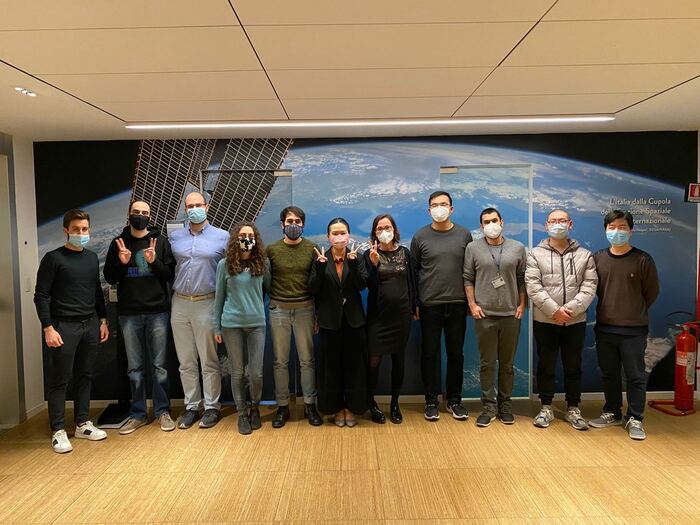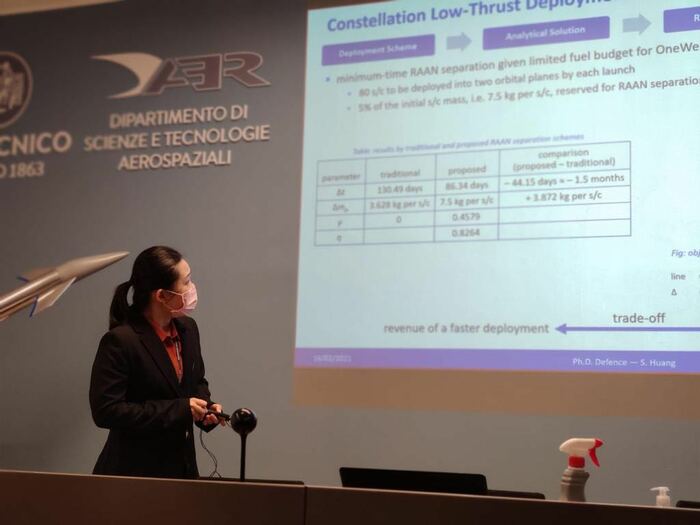On February 16, Simeng Huang defended her Ph.D. thesis entitled “Multi-Phase Mission Analysis and Design for Satellite Constellations with Low-Thrust Propulsion”.
As services from space become more and more important to life on Earth, the international interest in satellite constellations is increasingly growing. For example, many large constellations in Low Earth Orbit (LEO), composed of hundreds to thousands of satellites, are being planned or deployed in recent years, to provide global high-speed telecommunication services. The surge in constellations brings various challenges to constellation studies, such as the cost, the safety threat to space, and the considerable computational effort to design constellations containing many satellites. Simeng’s thesis responds to these challenges, performing mission analysis and design for four key phases of constellation life cycle.
A first phase is constellation design. No general rules exist for this task, and designers have to trade-off various cost drivers. The thesis presents a multi-criteria constellation design, in which seven constellation properties are quantitatively assessed, each property representing a critical constellation performance or cost. This design provides a systematic approach to find globally optimal constellations for given missions.
A second phase is constellation deployment. The work exploits low-thrust electric thrusters and the gravitational perturbations due to Earth oblateness, enabling to manoeuvre the satellites into multiple orbital planes from a single launch. An analytical approach is followed, first deriving formulas for circular low-thrust transfer subject to predefined control laws, and then determining the times allocated to separate deployment phases, allowing the total time and fuel consumption to be minimised. This design provides a computationally efficient approach to reduce cost, by trading off the revenue of a quicker deployment and the cost of higher fuel consumption.
The third phase is LEO constellation low-thrust de-orbiting through natural perturbations. Two different strategies are investigated: using thrust to lower the perigee altitude, and using thrust to reach a specific condition that leads to orbital decay under the coupled effect of the Earth oblateness and solar radiation pressure. For each strategy, a stable closed-loop control law is developed based on the method of Lyapunov feedback control. Subsequently, the averaged low-thrust motion governed by the proposed control laws are derived. By propagating the averaged motion for de-orbiting from the entire LEO region, maps that show the fuel budget, de-orbiting time, and application conditions of the two strategies are obtained. These maps allow mission designers to choose their preferred strategy according to mission conditions and requirements.
Finally, the planar low-thrust transfer for co-planar satellites is also studied, taking the collision risk between satellites from the same constellation into consideration. As first step, a closed-loop control law was developed by blending control laws which can efficiently change the planar orbital elements, and by offsetting the error of the osculating orbit relative to the target orbit. Then, the problem of avoiding the self-induced collision is converted to the problem of maximising the minimum relative distance between satellites, which in turn is addressed by properly scheduling the timing to start transfer for every satellite.

We congratulate Simeng for successfully defending her PhD thesis and completing this long journey!

